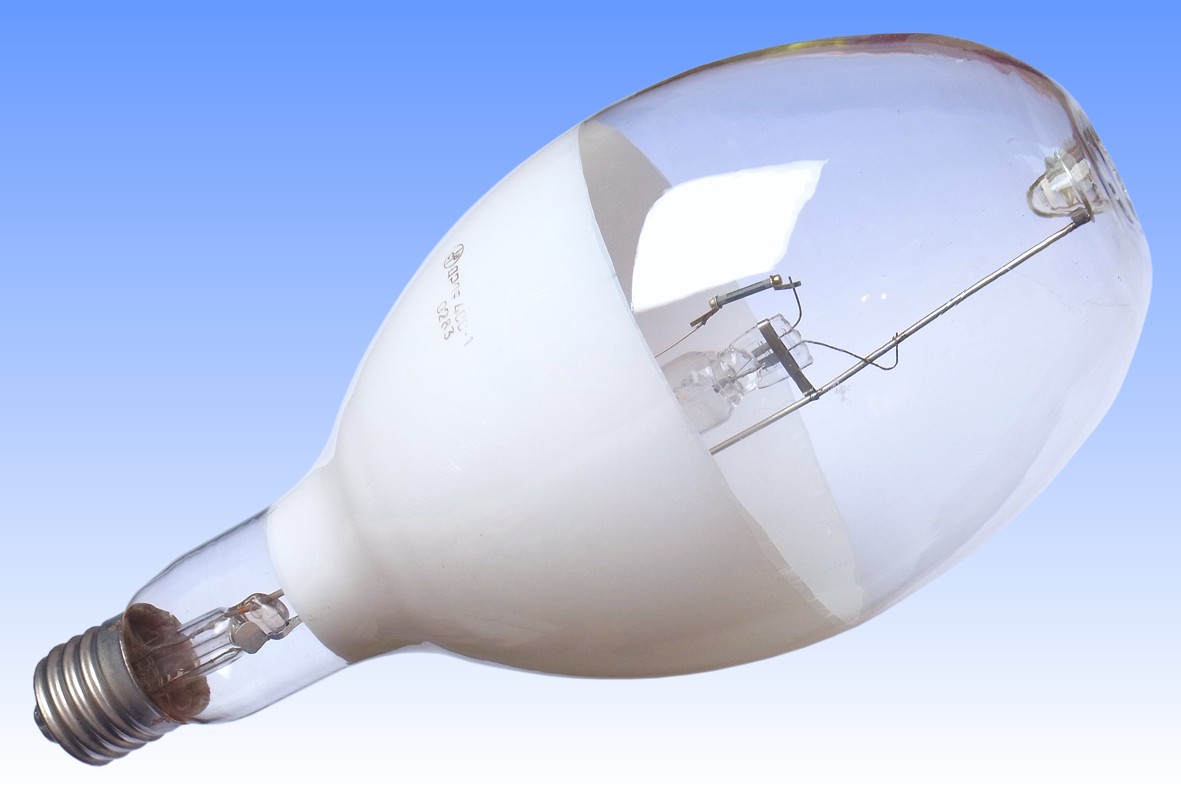
|
SELZ Mercury Reflector ДРЛФ400-1 (DRLF400-1) |

This lamp therefore employs an ellipsoidal shaped reflector, which projects a beam of considerably greater angle without the hot-spot directly below the lamp, and as a result greater uniformity on the working plane. In order to avoid the need for developing a special new bulb shape, a standard ellipsoidal bulb from an ordinary high pressure mercury lamp has been employed, but the arc tube is located closer to the bulb neck, closer to the focus of the reflector.
The 'reflector' part of the bulb is coated with a light reflective layer of titanium dioxide powder, and overcoated with yttrium vanadate phosphor to provide some colour correction. This 400W lamp employs the larger bulb normally used with 700W ratings, in order to increase the reflective surface area for improved optical efficiency. Such lamps were popular for horticultural applications until the mid 1980s, when they began to be replaced by high pressure sodium lamps whose spectral power distribution is better matched to the photosynthetic action spectrum.




| Manufacturer: | SELZ (Saransk Electric Lamp Plant) | |
| Lamp Power: | 400 Watts | |
| Lamp Current: | 3.25 Amps | |
| Lamp Voltage: | 135 Volts | |
| Cap Type: | E40s/45 | Ni plated brass + porcelain |
| Bulb Type: | ED-152 | ED-48 in eighths/inch |
| Bulb Finish: | TiO2+YVO4:Eu | Borosilicate Glass |
| Electrodes: | Backwound Tungsten | BCT emitter |
| Atmosphere: | Inner: Na,|Ar | Outer: Nitrogen |
| Luminous Flux: | 12,800 lm (@ 100h) | |
| Luminous Efficacy: | 32 lm/W (@ 100h) | |
| Luminous Intensity: | cd (@ 100h) | |
| Beam Distribution: | Approx 150° | to 50% peak intensity |
| Colour Temperature & CRI: | CCT: 3800K | CRI: Ra 35 |
| Chromaticity Co-ordinates: | CCx: 0.395 | CCy: 0.400 |
| Rated Lifetime: | 7000 hours | |
| Warm-up & Re-strike time: | ||
| Burning Position: | Universal | |
| Overall Length: | 368 mm | 14½ inches |
| Factory: | Saransk | Russia |
| Date of Manufacture: | February 1983 | Date Code 0283 |
| Original / Present Value: | Unknown | |
